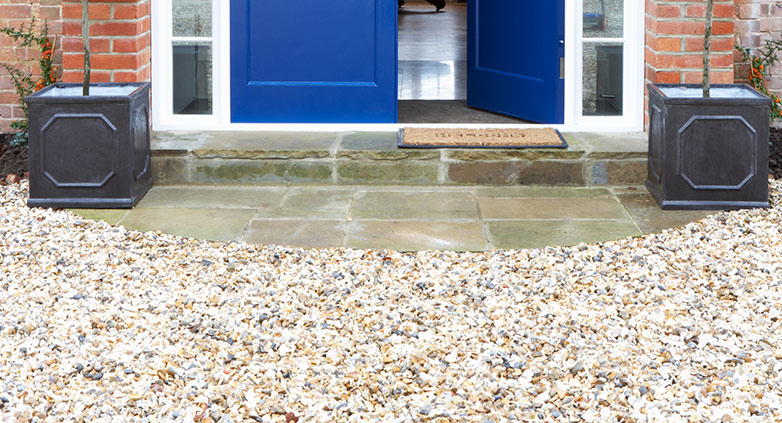Decomposed Granite Patio – 12-Step Guide to Construction
Decomposed granite patio offer an affordable, elegant solution for enhancing outdoor spaces. Known for its versatility and eco-friendly qualities, it’s an excellent choice for DIY landscaping enthusiasts.
Decomposed granite (DG) is not only cost-effective but also environmentally friendly, adding nutrients to soil through natural weathering. With its fine, gravel-like appearance, DG comes in various hues, enhancing any yard with its aesthetic appeal. Its permeability allows for efficient drainage, making it a practical and durable choice for patios, pathways, and casual outdoor areas.
To learn more about why decomposed granite is a top choice for constructors and homeowners alike, and how to install it yourself, continue reading our comprehensive guide.
How to Build A Decomposed Granite Patio in 12 Steps
When decomposed granite is used as a landscape material, it’s compacted into a tough, stable surface material to fit your patios. Here is a simple guide to help you install your DG patios.
1. Site Preparation
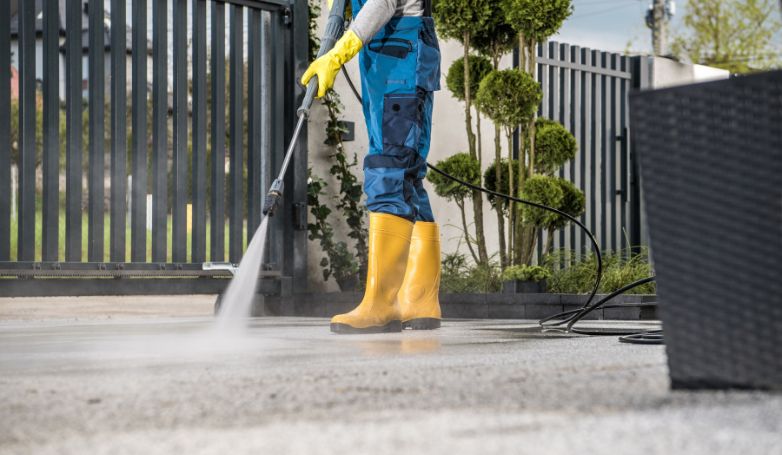
Start by meticulously clearing the intended patio area of any debris, vegetation, or protruding rocks. Level the ground, removing any existing sod, plants, or landscaping elements. This step is critical for a stable foundation for your decomposed granite patio. It’s essential to consider drainage at this stage to prevent water accumulation later. Ensure a slight slope away from structures for effective runoff, establishing a solid base for the subsequent layers.
2. Edge Establishment
Mark the patio’s boundaries using durable materials like metal edging, wooden stakes, or concrete borders. This step is not just for aesthetics; it serves to contain the decomposed granite within the patio area. Choose an edging that complements your landscape and patio design. It should be sturdy enough to withstand weather conditions and the pressure of the granite. Proper edging installation prevents the spread of granite outside the patio, maintaining a neat appearance.
3. Base Compaction
Lay a sub-base layer, typically of crushed stone or gravel, to provide a firm foundation for the patio. This layer should be evenly spread and then thoroughly compacted using a plate compactor or hand tamper. A well-compacted base ensures longevity and stability for the patio, preventing shifting and sinking. The thickness of the base layer can vary depending on soil type and intended patio usage but generally ranges from 2 to 4 inches.
4. Fabric Installation
Place a layer of landscaping fabric over the compacted base. This fabric acts as a barrier, preventing weeds from growing through the granite while allowing water to drain. It’s crucial to overlap the fabric strips to ensure complete coverage. Secure the fabric edges with garden staples to keep it in place. This step is vital for low-maintenance patios, as it minimizes weed growth and enhances the patio’s durability.
5. Granite Application
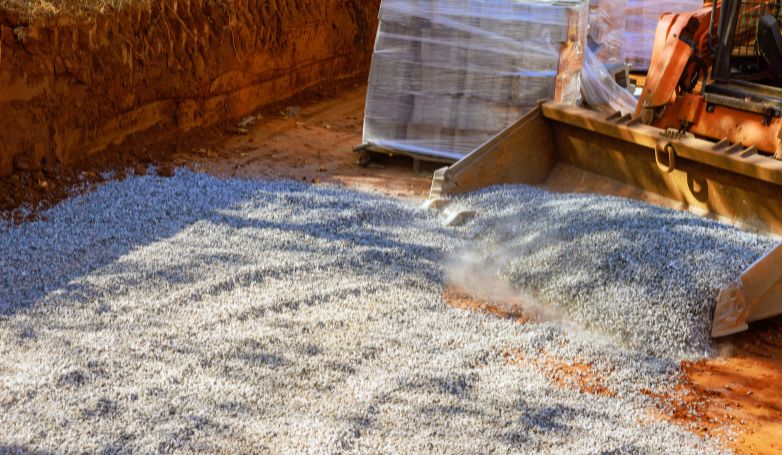
Spread decomposed granite in an even layer over the fabric. The thickness of this layer will depend on the granite grade and the intended use of the patio but typically ranges from 1 to 3 inches. Use a rake for even distribution. Select a granite color and texture that complements your outdoor space. This material comes in various hues and can be chosen to match or contrast with surrounding elements for a cohesive landscape design.
6. Granite Compaction
Compact the decomposed granite using a plate compactor for large areas or a hand tamper for smaller spaces. This process binds the granite particles together, creating a more stable surface. Compaction should be done evenly to prevent uneven settling or low spots. This step is crucial for the longevity of the patio, ensuring a firm and walkable surface that resists erosion and maintains its integrity over time.
7. Initial Watering
Lightly water the compacted granite to help settle and bind the particles. This initial hydration is a critical step in creating a hard and durable surface. Use a fine mist setting on a garden hose to avoid disturbing the granite. The water helps the granite to knit together, reducing dust and movement. Ensure that the area is thoroughly dry before moving on to the subsequent step.
8. Repeat Process
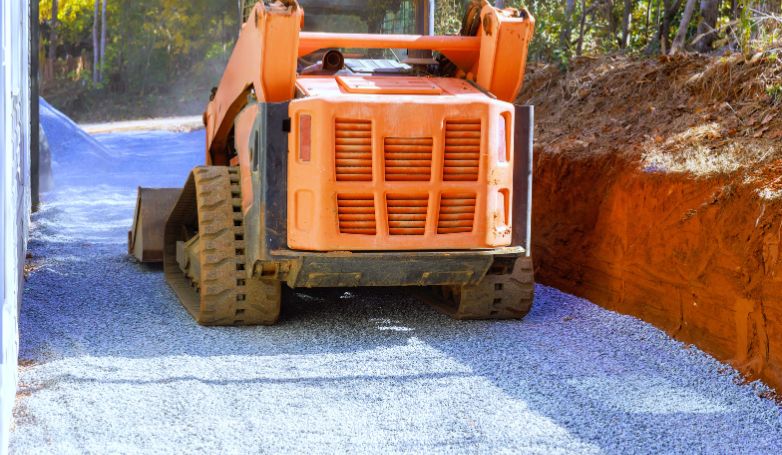
For added stability and thickness, repeat the application and compaction of decomposed granite. This is especially important for high-traffic areas or if the initial layer settles more than expected. Applying multiple layers ensures a more resilient patio surface. Each layer should be watered and compacted before adding the next, building up to the desired thickness and firmness.
9. Layer Addition (if necessary)
If needed, add additional layers of decomposed granite. This might be required in areas with softer soil or higher usage. Each added layer enhances the patio’s durability and resistance to wear. Ensure each layer is evenly spread, compacted, and hydrated as before. The total thickness of this material should be appropriate for your patio’s intended use and local weather conditions.
10. Sealing (Optional)
Consider sealing the granite surface with a decomposed granite stabilizer. This step is optional but recommended for areas with heavy foot traffic or erosion risks. The stabilizer binds the granite particles, creating a more cohesive and weather-resistant surface. It also reduces maintenance by minimizing erosion and dust. Apply the sealer according to the manufacturer’s instructions and allow adequate drying time.
11. Final Touches
Finish your patio with additional landscaping or decorative elements. This can include planting border flowers, installing lighting, or adding patio furniture. Regular maintenance, such as occasional raking and topping up granite, keeps the patio in top condition. Enjoy your new outdoor space, an inviting and functional addition to your home.
Is Decomposed Granite Good For Patios?
Decomposed granite is a good option for outdoor patios; they provide a wonderful addition to your homes and contribute to the aesthetic of your business places. Depending on the type of decomposed granite installed, your DG patio can offer many admirable benefits.
- Decomposed granite patios are inexpensive. Compared with other paving materials you can use on your patios, you will find that decomposed granite costs you less. Both installation and maintenance are less expensive.
- They are highly absorbent, preventing water from sitting or creating puddles on your patios.
- DG comes in different styles and patterns, leaving you with various options. Over thirty shades and colors to beautify your homes and business places.
- Is easy to clean; it requires less time and energy to maintain and stay tidy. Also, with the basic equipment, your DG patios will remain durable for a long time.
Decomposed Granite Patio Problems
This material is a popular paving material. It has many benefits that make it desirable to homeowners. However, you should consider a few pitfalls before deciding on the right paving material for your patios.
- Decomposed granite needs a regular refill: DG gets scattered and lost with regular use because of its nature. The challenge here is getting the exact color or pattern to add up to what you already have installed.
- Depending on the type of DG patio you have installed, your patio might remain stable or muddy with heavy rainfall. A good example is loose DG. Loose decomposed granite tends to get muddy or erode when wet. DG is more suitable in areas with low rainfall.
- Although this material is very porous and offers a good drainage system, it loses its ability to filter and automatically drain water when coated with resin.
- Decomposed granite patios can grow weeds and moss. This will require that you frequently remove and maintain your patios.
Decomposed granite vs. Crushed granite
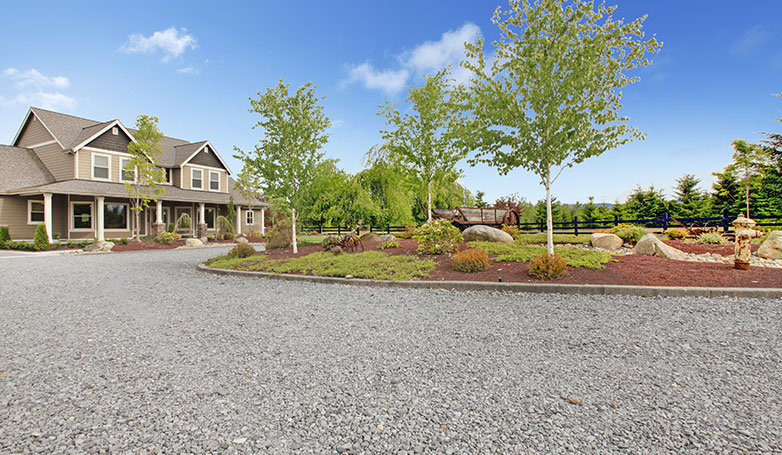
DG and crushed granite are closely related. However, crushed granite is not crushed as finely as decomposed granite. While crushed granite may not be the best paving material for homeowners with certain disabilities or a family with toddlers, decomposed granite patios bring smoothness and stability that is safe for you and your children.
Crushed granite still has its benefits and can be manipulated to create stable surfaces. Deciding between crushed granite or DG patios shouldn’t be that difficult. Decomposed granite has a more economical impact and requires less maintenance. On the other hand, crushed granite has definite sharp edges that require more maintenance.
Decomposed Granite Patio Cost
| Cost Factor | Price |
|---|---|
| DIY Small Patio | < $20 |
| Material Cost per Cubic Yard | $40 – $50 |
| Professional Installation per Hour | $70 – $80 |
The initial cost of purchasing and installing decomposed granite on your patios is quite low. This is because decomposed granite is available and, to an extent, easy to produce. Also, the installation process doesn’t take up much time and energy. Unlike concrete and asphalt patios, decomposed granite patios take up less time.
The price of DG will depend on several factors. This may include; color, size, quality, and whether it’s stabilized. Building a small patio can cost less than 20 dollars if you decide to do it yourself. DG patios will cost 40 to 50 dollars per cubic yard to purchase the material, and you can expect to pay between 70 to 80 dollars per hour for installation.
Decomposed Granite Patio Ideas And Images
Nice Decomposed Granite Paths and Patios
This decomposed granite can enhance their beauty and create a beautiful and relaxing pattern for paths and patios.
Brown DG for patios
Made from natural erosion of solid granite. It’s stable and durable with a natural feel.
Low-cost Decomposed Granite Patios
Eco-friendly, durable patio covered with decomposed granite.
Colorful Decomposed Granite
DG comes in different colors and styles that can brighten your day. This fine DG is perfect for patios.
Fine Decomposed Granite
Decomposed granite is composed of fine rocks that have weathered.
FAQs about Decomposed Granite Patio
Here are the most frequently asked questions on this topic.
Does decomposed granite attract bugs?
Since DG patios are weathered rocks, it’s easy to assume they will attract bugs and insects to your homes. Well, DG is a hundred percent environmentally friendly and doesn’t decay. And since it does not decay, your decomposed granite patios won’t attract bugs.
Is decomposed granite comfortable to walk on?
DG has been broken into fine and small particles of similar sizes. This material is stable and compacted down into the installed area, making it easy and comfortable to walk on. Decomposed granite is a powdery material with a relaxing feel and is much more attractive than other paging materials.
What happens to decomposed granite when it rains?
Bad news. As mentioned earlier, decomposed granite is best suited for locations with low rainfall. So depending on where you leave and how heavy the pour is. Your DG can be a total mess. Thankfully, decomposed granite is porous and provides a great draining system for water from sitting on the surface. But when the rain becomes heavy, it can create a mess and ruin the entire area.
Decomposed granite may also be a poor choice because of its ability to erode, get muddy, or grow weeds. If you live in an environment with heavy rainfall, you should consider a more suitable paving material for your patios, walkway, or driveways.
Conclusion
DG is a great choice for your patios, but you must consider all the factors that can affect or ruin your DG patio before jumping on it. Decomposed granite, when installed properly, can successfully be used to pave any outdoor surface and will remain there for a long period.

